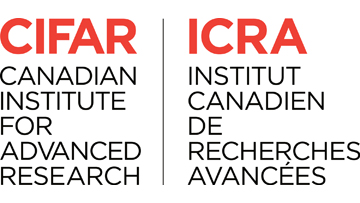Epigenetics is associated with long-term human developmental and health outcomes. It is therefore essential to better understand the biology of the epigenome, the links between epigenetic processes and gene-environment interplay, early adversity and developmental risk, and the role of developmental time.
Synthesis PDF Complete topic PDFInformation sheets
Download the free PDF version here or purchase hardcopy prints from our online store.
Epigenetics
Epigenetics: How experience "gets inside" our biology

Synthesis
How important is it?
Behavioural or social epigenetics is a new science poised to revolutionize our understanding of how we develop. Genetics is the study of how characteristics are inherited from one generation to the next through DNA. Epi comes from the Greek word meaning upon or over. Epigenetic processes place marks on or nearby DNA; some of these marks can change the amount of gene product (RNA, protein) a gene makes.
Epigenetics is thought to regulate how the brain develops and how it works. Both are critical for our learning, behaviour and health.
One of the central purposes of behavioural epigenetics is to understand how epigenetic marks can change gene expression, and, in turn, the path (trajectory) of development––physical, social and emotional, approaches to learning, thinking, and communication and language. Changes to how we develop can range from being adaptive (positive and functional) to maladaptive (negative and dysfunctional).
Epigenetic changes triggered by adverse childhood experiences (ACEs) are typically maladaptive. These changes can happen from the earliest stages of life, throughout childhood and into adulthood. They occur in our cells and can have a profound effect on lifelong mental and physical health.
Recent studies link child abuse, neglect and ongoing stress to antisocial behaviour, depression and the risk of suicide. Other evidence has found ACEs can increase the risk of mental illness, poorer educational achievements and chronic disease. More research is needed to determine if some epigenetic changes can be passed to future offspring.
By uncovering how our genes (DNA sequence) and our environment (experiences) affect each other, behavioural epigenetics promises to reveal their effect on an individual’s development, behaviour and well-being. Researchers also want to determine if it is possible to identify children at risk and if negative outcomes can be prevented or reversed through positive interventions or drug therapies.
What do we know?
Environment and experiences affect our genes and development.
In children, caring, stable and nurturing environments help build a strong foundation for brain development, lifelong health, learning and normal social and emotional development. At the heart of these environments are caring, stable and nurturing relationships with adults: parents, grandparents, childcare providers, teachers and more.
Similarly, adverse environments and relationships with adults that include poverty, abuse, neglect, stress, and trauma can also change the expression of genes involved in developing and regulating the nervous system. In turn, this can negatively affect a child’s brain development, stress responses and the risk of developing illnesses and other challenges. The risks and effects of adverse childhood experiences are highest among those living near, at or below the poverty line.
While many molecular mechanisms control gene expression, epigenetic processes offer a groundbreaking look at how and under what social conditions genes and environment intersect.
Evidence from a variety of studies suggests that epigenetic modifications drive many changes in brain circuitry. For example, stress-related psychiatric conditions, such as suicidal ideation and attempts, depression, post-traumatic stress disorder, schizophrenia and brain changes due to psychoactive and antipsychotic drugs, have induced epigenetic changes.
A growing body of evidence indicates that the number of genetic marks on DNA sequences increases with number of adverse childhood experiences (ACEs) a child has.
Research is also shedding light on how differences in epigenetic susceptibility affect children exposed to harmful stress. Such understanding may offer insight into stress-related disorders, resilience, vulnerability and why health issues affect people differently.
Behavioural epigenetic research is gaining a greater understanding of the periods of development. Critical periods are those in which the presence or absence of important experiences or exposures can change the development of brain circuitry. Sensitive periods are developmental intervals when the brain is especially responsive to experiences and thought to gradually open and gradually close. Both depend on experiences for brain plasticity during defined windows of early life.
The brain is fragile as it develops. Molecular ‘triggers’ and ‘brakes’ can open and close opportunities for brain plasticity over time. These and other findings have fundamentally shifted thinking about brain plasticity.
A newer understanding indicates that the brain is naturally plastic and during normal development plasticity is suppressed except when critical periods are open. These periods can be thought of as ‘windows’ of opportunity during which the brain is sculpted by experience. Critical and sensitive periods open and close as the brain’s circuitry is established.
Epigenetic processes may also transmit risk and disorder from one generation to the next, although more research is needed in this area. Risks and protective factors can be passed from parents to children through behavioural and social factors, or possibly by inherited epigenetic marks.
What can be done?
More research into epigenetics is needed, but it is clear that adverse childhood experiences can affect the genes that are involved with stress responses, immunity and mental and physical health. It’s important for each and every child to live in a caring, stable and nurturing environment and to have similar relationships with adults.
Discover more

How can experiences, environment and biology influence development?
In recent years, a lot of new information has emerged on epigenetics that allows us to better understand how developmental trajectories can be either adaptive or maladaptive.
Experiences and environmental exposures act on genes like a dimmer switch to increase or decrease gene expression, the amount of gene product (RNA, protein) that a gene makes in response to a given environment. This is thought to regulate the neurodevelopment that underlies learning, behaviour as well as mental and physical health.
The developing brain is especially vulnerable to the negative effects of social environmental exposures during early developmental periods. Conversely, supportive, attentive and sensitive adult care plays a salient role in protecting children.
Not all children react the same way to both adverse and nurturing early experiences. Individual differences in epigenetic susceptibility may well be the explanation behind the various responses to environments. The effects of experience on the modification of gene expression can also be transmitted into the next generation.
By better understanding how genes and the environment interact we may help to identify children at risk who could gain the most from intervention.
Publications
Gene-Environment Interplay and Epigenetic Processes
Epigenetic Embedding of Early Adversity and Developmental Risk

Resources and bulletins
The Encyclopedia also recommends...
Child & Brain Development Research Program
Canadian Institute for Advanced Research (CIFAR)
Epigenetics and the underpinnings of vulnerability
Bulletin on Early Childhood Development 2015; 12(1):10
The inheritability of PTSD: Identifying the vulnerable
Bulletin on Early Childhood Development 2015; 12(1):11
Prevention of mental illness: why not start at the beginning?
Bulletin on Early Childhood Development 2010; 9(1):1
On the road to positive mental health
Bulletin on Early Childhood Development 2010; 9(1):2
Canadian ECD research in 2009: Cash transfers, stress, DNA methylation and health
Bulletin on Early Childhood Development 2010; 9(2):1
Epigenetics: Changing the way we view physical and mental disease
Bulletin on Early Childhood Development 2010; 9(2):2
How the environment shapes the brain
Bulletin on Early Childhood Development 2010; 9(2):3
Max Planck Institute of Immunobiology and epigenetics, Germany
Max Planck Institute of Psychiatry, Germany
Work of Elisabeth Binder on translational research in psychiatry
The Douglas Hospital Research Centre, McGill University and the Montreal West Island IUHSSC, Canada
Work of Dr. Michael Meaney
Takao Hensch & Hensch Lab, Harvard University, USA
For his work on critical periods of brain development
Janet Werker, University of British Columbia, Canada
For her work on language acquisition and critical periods





